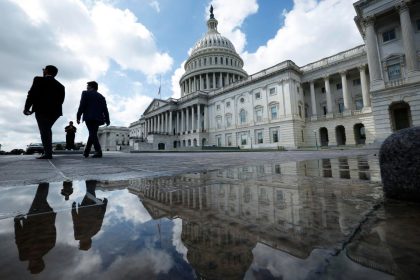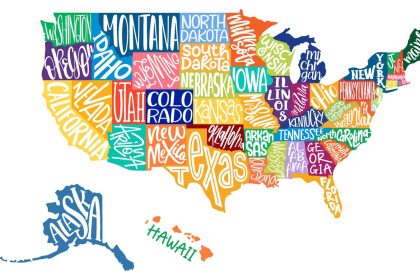Pennsylvania has joined the list of states that will participate in the IRS Direct File program in 2025.
The move was confirmed by Secretary of Treasury Janet Yellen during a visit to Philadelphia, where she met with Pennsylvania Governor Josh Shapiro—and ordered a Philly cheesesteak ( the steak was ordered “wit” from Jim’s on South Street).
Pennsylvania will join Oregon and New Jersey, which an IRS spokesman confirmed have been added to the 12 states from 2023 (Arizona, California, Florida, Massachusetts, Nevada, New Hampshire, New York, South Dakota, Tennessee, Texas, Washington, and Wyoming).
Direct File Pilot
As part of a pilot program in 2024, eligible taxpayers in those 12 states were able to file their federal tax return for free, directly with the IRS, using Direct File.
The pilot was announced in October 2023 and closed after the filing season ended in April 2024. The IRS has called it a success, saying that several hundred thousand taxpayers across 12 states signed up for Direct File accounts, and 140,803 taxpayers filed their federal tax returns using the new service. Eligibility was limited to taxpayers with simple returns in those states.
The IRS began promoting the program in January of 2024, with a more robust push to taxpayers when the program fully opened in March. The March rollout of the pilot program included making the service available in Spanish.
According to the IRS, taxpayers filed—for free—to obtain more than $90 million in refunds and saved an estimated $5.6 million in filing costs.
(An earlier IRS survey indicated that the average American spends $270 to file their taxes.)
Inflation Reduction Act
As part of the Inflation Reduction Act (IRA), Congress tasked the IRS with delivering a report on, among other things, the cost of developing and running a free direct e-file tax return system, including costs to build and administer each release, with a focus on multi-lingual and mobile-friendly features and safeguards for taxpayer data. The IRS released the report to Congress in May 2023.
According to the report, the IRS spent several months studying how an IRS-run free direct e-file tax return system might work. Most taxpayers surveyed by the agency reported interest in using an IRS-provided tool to prepare and file their taxes. At the time, the IRS indicated it hoped to make that a reality for some taxpayers for the 2024 tax filing season.
When the filing season opened in January 2024, the IRS announced the limited-scope pilot, which it claimed would allow the IRS to evaluate the costs, benefits, and operational challenges associated with providing the option to taxpayers.
The pilot was, the IRS says, a success. According to the IRS, Direct File users reported a high degree of satisfaction and quick answers to their filing questions. In a GSA Touchpoints survey of more than 11,000 Direct File users, 90% of respondents ranked their experience with Direct File as “Excellent” or “Above Average.” Most survey respondents who filed taxes in the prior year reported having to pay to prepare their taxes last year. Among survey respondents, 47% of users paid to file their taxes last year, and 16% did not file last year at all.
When asked what they particularly liked, respondents most commonly cited Direct File’s ease of use, trustworthiness, and that it was free. Additionally, 86% of respondents said their experience with Direct File increased their trust in the IRS.
(You can read what some taxpayers had to say to Forbes about their experiences here.)
Treasury Says Yes
Werfel recommended to Yellen that Direct File be made permanent. “Taxpayers across the nation have told us they want no-cost filing options,” he wrote. “Direct File – which provides taxpayers a new option to file online, for free, directly with the IRS – is the answer to that call.”
Yellen responded that she agreed with the proposal, pointing out that countries like the United Kingdom and Australia have offered products like Direct File for some time. While she didn’t directly address costs, she noted that the IRA “was passed in order to give the President the tools needed to lower costs for the American people.”
Other IRA Projects
Direct File isn’t the only project that funds from the IRA have made possible for the IRS.
“Funding from the Inflation Reduction Act is helping spur innovation and improvement across the IRS to transform our operations in our work to help taxpayers and the nation,” said IRS Commissioner Danny Werfel. “This progress can be seen in our continued expansion of our online accounts to provide more features, increased use of new digital tools and additional special activities to help taxpayers in-person. By providing digital forms, making payments easier and continuing work to reduce paper-based processes that have long hampered the IRS and frustrated taxpayers, our progress is accelerating to make long-overdue improvements.”
Werfel recently highlighted some of these projects as part of a quarterly update on the IRS Strategic Operating Plan, which was made possible by IRA funding. That includes expanding its online platforms, including several new features in Individual Online Account, which allows taxpayers to request an update to their Identity Protection (IP) PIN using their smartphones or tablets, view information about the status of their audit at their convenience, use a Lien Payoff Calculator to access lien information and payoff amount, and view a comprehensive overview of their account information, including the status of their tax refund as it’s being processed.
The IRS also reported acceptance of its one millionth taxpayer submission through the Document Upload Tool. Initially launched in 2021 in a limited format and expanded in 2023 with funding from the IRA, the tool offers taxpayers and tax professionals the option to respond digitally to eligible IRS notices by securely uploading required documents online through IRS.gov.
The IRS is also increasing efforts to help taxpayers by expanding in-person services, particularly those in underserved and rural communities. Notably, this summer, the IRS is ramping up Community Assistance Visits—face-to-face meetings with IRS customer service representatives for taxpayers who live about a two-hour drive from an IRS office. The IRS has hosted events in Roma, Texas; Humboldt, Iowa; Hazlehurst, Georgia; Orocovis, Puerto Rico; and Gallup, New Mexico. Upcoming Community Assistance Visits include:
- August 5-9, Thomasville, Alabama
- August 19-23, Abilene, Kansas
- September 9-13, West Plains, Missouri
- September 23-27, Clarkston, Washington
- October 7-11, Fairbanks, Alaska
- October 21-25, Potsdam, New York
Enforcement
IRA money has also been used to ramp up efforts to pursue high-income, high-wealth individuals who have either not filed their taxes or failed to pay recognized tax debt, with dozens of revenue officers focused on these high-end collection cases.
In January, Werfel reported that the focus on taxpayers with more than $1 million in income and more than $250,000 in recognized tax debt was paying off. In an initial success, the IRS collected $38 million from more than 175 high-income earners. Last fall, the IRS began contacting about 1,600 new taxpayers in this category who owe hundreds of millions of dollars in taxes. The IRS has assigned over 900 of these 1,600 cases to revenue officers, with over $482 million collected so far. This brings the total recovered from millionaires through these new initiatives to $520 million.
Earlier this year, the IRS announced that compliance letters would go out this week for more than 125,000 cases where tax returns haven’t been filed since 2017. The mailings include more than 25,000 to those with more than $1 million in income, and over 100,000 to people with incomes between $400,000 and $1 million between tax years 2017 and 2021.
And earlier this month, the IRS announced that it has collected more than $1 billion from high-wealth taxpayers. The $1 billion collected represents collections as of April 2024, with work continuing in this area.
Read the full article here





